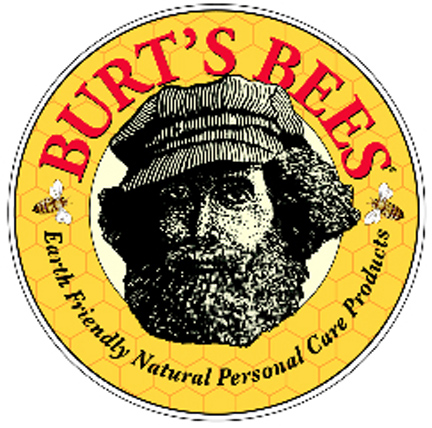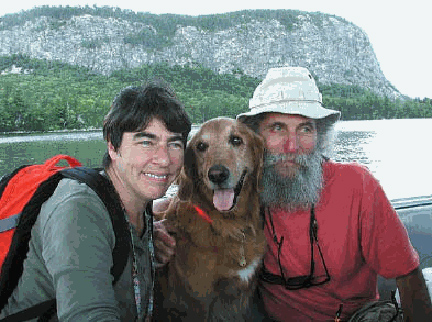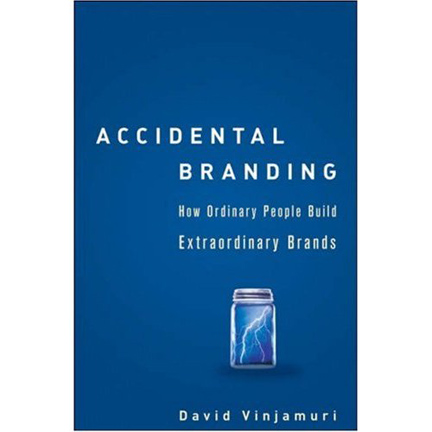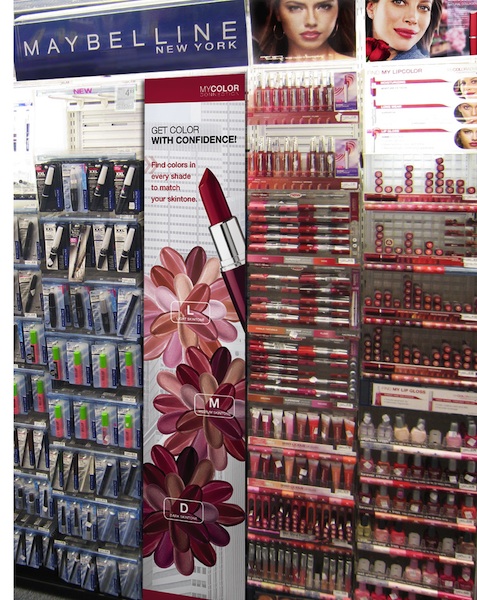
Burt’s Bees – an Accidental Brand
 Being a student at NYU’S School of Continuing and Professional Studies – I take an evening class called “Positioning and Brand Development” – I regularly get invited to their Marketing and Public Relations events. Yesterday I went to the NYU book launch event “Accidental Branding: How Ordinary People Build Extraordinary Brands”, the new book by NYU marketing professor David Vinjamuri. He studied entrepreneurs who built strong brands without the benefit of an MBA or any background in brand marketing. Acclaimed entrepreneurs John Peterman (J. Peterman), Craig Newmark (Craigslist), and Roxanne Quimby (Burt’s Bees) shared their thoughts on how they created their brands without traditional marketing campaigns. The most compelling brand story to me was Roxanne’s: Burt’s Bees originated in Maine as a candle making partnership between Roxanne Quimby and Burt Schavitz in 1984. Last year, the quirky, eco-friendly enterprise Burt’s Bees was sold to The Clorox Company for $913 million.Roxanne Quimby was living in a tent in Maine with her daughters when Burt Shavitz, a beekeeper, picked her up hitchhiking. She was fascinated by both the bee keeping and Burt’s unique lifestyle of a hermit. They became lovers and eventually founded Burt’s Bees..
Being a student at NYU’S School of Continuing and Professional Studies – I take an evening class called “Positioning and Brand Development” – I regularly get invited to their Marketing and Public Relations events. Yesterday I went to the NYU book launch event “Accidental Branding: How Ordinary People Build Extraordinary Brands”, the new book by NYU marketing professor David Vinjamuri. He studied entrepreneurs who built strong brands without the benefit of an MBA or any background in brand marketing. Acclaimed entrepreneurs John Peterman (J. Peterman), Craig Newmark (Craigslist), and Roxanne Quimby (Burt’s Bees) shared their thoughts on how they created their brands without traditional marketing campaigns. The most compelling brand story to me was Roxanne’s: Burt’s Bees originated in Maine as a candle making partnership between Roxanne Quimby and Burt Schavitz in 1984. Last year, the quirky, eco-friendly enterprise Burt’s Bees was sold to The Clorox Company for $913 million.Roxanne Quimby was living in a tent in Maine with her daughters when Burt Shavitz, a beekeeper, picked her up hitchhiking. She was fascinated by both the bee keeping and Burt’s unique lifestyle of a hermit. They became lovers and eventually founded Burt’s Bees.. Burt and Roxanne built an ideal partnership in order to develop a successful brand: While Burt embodied the brand’s myth of freedom and simplicity, Roxanne has a distinct sense for business and for her clients needs. She talked about her first trips to craft fairs where she spent countless hours watching her clients and talking to them. For example, she soon noticed, that almost everyone looking at her candles turned them over to see how the bottom looked. She still has no explanation for this behavior but she learned to make sure that all her candles looked neat and beautifully made from all sides. Roxanne emphasized the fact that she didn’t have to unlearn anything (since she didn’t have any existing opinions about consumer behavior). She was probably more open to consumer information than any marketing professional could ever be.While speaking with her customers (they most often wanted to know more about Burt and his lifestyle) she also noticed a general need and unspoken desire. “There is an inner Burt in everyone; a deep desire to have a less complicated and stressful life”. She therefore designed new products which were always as simple as possible: She only used ingredients everybody has in their kitchen (i.e. avocado, olive oil) and only picked names that people could easily pronounce and understand.Burt and Roxanne didn’t spend money on marketing campaigns – “it’s in the jar, not in the advertising”, as Roxanne said yesterday.Luck and good timing played a role for Roxanne and the other entrepreneurs I learned from yesterday. Their success ultimately stemmed from an ability to think like their own consumer. This is one of the six lessons of accidental brands David Vinjamuri discusses in his book..
Burt and Roxanne built an ideal partnership in order to develop a successful brand: While Burt embodied the brand’s myth of freedom and simplicity, Roxanne has a distinct sense for business and for her clients needs. She talked about her first trips to craft fairs where she spent countless hours watching her clients and talking to them. For example, she soon noticed, that almost everyone looking at her candles turned them over to see how the bottom looked. She still has no explanation for this behavior but she learned to make sure that all her candles looked neat and beautifully made from all sides. Roxanne emphasized the fact that she didn’t have to unlearn anything (since she didn’t have any existing opinions about consumer behavior). She was probably more open to consumer information than any marketing professional could ever be.While speaking with her customers (they most often wanted to know more about Burt and his lifestyle) she also noticed a general need and unspoken desire. “There is an inner Burt in everyone; a deep desire to have a less complicated and stressful life”. She therefore designed new products which were always as simple as possible: She only used ingredients everybody has in their kitchen (i.e. avocado, olive oil) and only picked names that people could easily pronounce and understand.Burt and Roxanne didn’t spend money on marketing campaigns – “it’s in the jar, not in the advertising”, as Roxanne said yesterday.Luck and good timing played a role for Roxanne and the other entrepreneurs I learned from yesterday. Their success ultimately stemmed from an ability to think like their own consumer. This is one of the six lessons of accidental brands David Vinjamuri discusses in his book.. Here are the six lessons in short:1 Do sweat the small staffSuccessful brands are often based on the sum of small, yet powerful, details (for example, Apple). Entrepreneurial brands are thought through, down to the smallest details (including packaging, which is often underestimated by big corporations).2 Pick a FightYour new brand is ideally developed because you are dissatisfied with something and wanted to solve a problem. For example, Gary Erickson, a long-distance cyclist and creator of the Clif Bar, was disgusted with foul-tasting energy bars. He invented his own bar, making it more delicious and nutritious than any of its competitors.3 Be your own customerWatch your customers and learn from their behavior and their suggestions. For example, David Neeleman, Founder and Chairman of Jet Blue, flies on Jet Blue flights each week, introduces himself to every person on board and asks them for suggestions on how to improve the airline.4 Be unnaturally persistentStrong brands don’t grow over night. It often takes one or two decades until they turn into (monetarily) successful brands.5 Build a MythA brand’s mythology – a story with a lesson – is easily shared and conveys what makes the brand special.6 Be faithfulStay with the people you started with, as well as with your core customer.Most people find the fact that Burt’s Bees, a unique and quirky enterprise, is now owned by the American mainstream brand Clorox, disturbing. Unfortunately, this was not a topic in yesterday’s discussion. If you want to know more about how Clorox is planning to learn from the unusual and green business practices at Burt’s Bees, read the interesting NY Times article “Can Burt’s Bees Turn Clorox Green?”By the way: Burt still lives in the converted turkey coop — expanded but without running water or electricity. “The magic of living life for me is, and always has been, the magic of living on the land, not in the magic of money.”
Here are the six lessons in short:1 Do sweat the small staffSuccessful brands are often based on the sum of small, yet powerful, details (for example, Apple). Entrepreneurial brands are thought through, down to the smallest details (including packaging, which is often underestimated by big corporations).2 Pick a FightYour new brand is ideally developed because you are dissatisfied with something and wanted to solve a problem. For example, Gary Erickson, a long-distance cyclist and creator of the Clif Bar, was disgusted with foul-tasting energy bars. He invented his own bar, making it more delicious and nutritious than any of its competitors.3 Be your own customerWatch your customers and learn from their behavior and their suggestions. For example, David Neeleman, Founder and Chairman of Jet Blue, flies on Jet Blue flights each week, introduces himself to every person on board and asks them for suggestions on how to improve the airline.4 Be unnaturally persistentStrong brands don’t grow over night. It often takes one or two decades until they turn into (monetarily) successful brands.5 Build a MythA brand’s mythology – a story with a lesson – is easily shared and conveys what makes the brand special.6 Be faithfulStay with the people you started with, as well as with your core customer.Most people find the fact that Burt’s Bees, a unique and quirky enterprise, is now owned by the American mainstream brand Clorox, disturbing. Unfortunately, this was not a topic in yesterday’s discussion. If you want to know more about how Clorox is planning to learn from the unusual and green business practices at Burt’s Bees, read the interesting NY Times article “Can Burt’s Bees Turn Clorox Green?”By the way: Burt still lives in the converted turkey coop — expanded but without running water or electricity. “The magic of living life for me is, and always has been, the magic of living on the land, not in the magic of money.”

